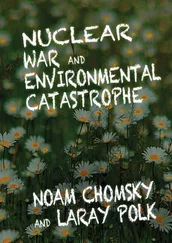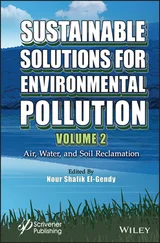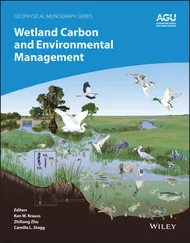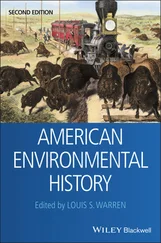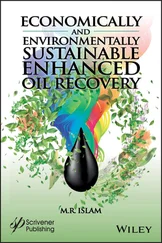Table 1.2 Cyanobacterial/microalgal strains involved in biodegradation of pesticide.
| Chemical |
Microalgae/Cyanobacteria |
Reference |
| Monocrotophos and Quinalphos |
Chlorella vulgaris, Scenedesmus bijugatus, Synechococcus elongatus, Phormidium tenue, Nostoc linckia |
[31] |
| Methyl parathion |
C. vulgaris, S. bijugatus, N. linckia, N. muscorum, Oscillatoria animalis, P. foveolarum |
[32] |
| DDT |
Chlorococcum sp., Anabaena sp., Nostoc sp. |
[77] |
| α-Endosulfan |
Scenedesmus sp., Chlorococcum sp., |
[76] |
| Fenamiphos |
Pseudokirchneriella subcapitata, Chlorococcum sp. |
[33] |
| Dimethomorph and Pyrimethanil |
S. quadricauda |
[39] |
| Fluroxypyr |
Chlamydomonas reinhardtii |
[40] |
| Chlorpyrifos |
Synechocystis sp. strain PUPCCC 64 |
[41] |
| Prometryne |
C. reinhardtii |
[43] |
| Anilofos |
Synechocystis sp. strain PUPCCC 64 |
[42] |
| Acephate, Imidaclorpid |
C. mexicana |
[44] |
| Diazinon |
C. vulgaris |
[13] |
| Methyl parathion |
Fischerella sp. |
[45] |
In addition to this, five green algae ( Chlorella sp., Scenedesmus sp. MM1, Stichococcus sp., Scenedesmus sp. MM2, and Chlamydomonas sp.) and five cyanobacteria ( Anabaena sp., Nostoc sp. MM1, N. muscorum , Nostoc sp. MM3, and Nostoc sp. MM2) have been reported to degrade fenamiphos which is an organophosphorus pesticide [33].
2,4-dichlorophenol (2,4-DCP) is often used as an intermediate in synthesis of insecticides and herbicides such as 2,4-D. Thus, the release of chlorophenols as industrial waste or by degradation of chlorinated pesticides have cause serious environmental threat [34]. Yang et al . [35] reported biotransformation and enzymatic responses of 2,4-dichlorophenol in Skeletonema costatum (diatom). They demonstrated that Cytochrome P-450, a key enzyme in biotransformation and metabolization, did not play an important role in 2,4-DCP detoxification.
Popular pest control agents such as chlorinated agrochemicals cause serious environmental problems such as accumulation in non-target organisms as well as in water and soil. Considering the high persistence and toxicity of chlorinated pesticide like lindane, many countries have prohibited its direct application [36]. Thus, there is a requirement of potential microalgal strain for eco-friendly remediation of chlorinated pesticides. Kuritz and Wolk [37] evaluated the lindane degrading potential of cyanobacteria N. ellipsosporum and Anabaena sp. genetically manipulated to biodegrade another contaminant 4-chlorobenzoate. Biodegradation of the pesticide lindane by the cyanobacterial strains Synechococcus sp., Oscillatoria sp., Cyanothece sp., Nodularia sp., Synechococcus sp., Nostoc sp., Microcystis aeruginosa , A. cylindrical , M. aeruginosa , A. spiroides , and A . flos-aquae has been reported [38].
Dosnon-Olette [39] demonstrated the removal of fungicides dimethomorph and pyrimethanil and herbicide isoproturon by the microalgae S. quadricauda and S. obliquus . The study showed that S. quadricauda removed dimethomorph and pyrimethanil more effectively than S. obliquus . Fluroxypyr (pesticide) accumulation and degradation by green alga C. reinhardtii was reported by Zhang [40]. They noted that C. reinhardtii had the potential to degrade more than 57% of bioaccumulated fluroxypyr within 5 days.
Singh et al . [41] demonstrated the potential of the cyanobacterium Synechocystis sp. to biodegrade the organophosphorus pesticide chlorpyrifos. The study showed that the organism could tolerate chlorpyrifos up to 15 mg L −1. Maximum removal of chlorpyrifos was achieved at a temperature of 30°C, pH 7.0, and 100 mg protein −1biomass. Metabolization of the pesticide by the cyanobacteria resulted in production of 3,5,6-trichloro-2-pyridinol as degradation product. The same cyanobacterial strain was later reported to degrade anilofos by Singh et al . [42]. In the study, the organism was found to tolerate high concentration of anilofos (25 mg L −1).
The influenced of the pesticide on photosynthetic pigment content was dose-dependent. The herbicide was uptaken rapidly by the organism during the first 6 hours after which there was slow uptake until 5 days. The cyanobacterium utilized anilfos as a source of phosphate with maximum removal of anilofos at temperature of 30°C, pH 8.0, and 100 mg protein L −1. In addition to cyanobacteria, microalgae are reported to degrade herbicides. For instance, the green alga C. reinhardtii was found to accumulate and biodegrade the pesticide prometryne. The study demonstrated that C. reinhardtii had the capacity to degrade prometryne at a moderate concentration of 5 g L −1. This uptake and degradation of herbicide by C. reinhardtii reflect the internal tolerance mechanism of the green algae and establish it as a potential strain for remediation of prometryne from contaminated water [43].
In a recent study, Kurade et al . [13] found that C. vulgaris has the capacity of bioremediation of diazinon ( Figure 1.3). In the study, the rate constant of degradation (k) of diazinon (0.5–100 mg L −1) ranged between 0.2304 to 0.049 d −1and the half-life (T 1/2) ranged between 3.01 and 14.06 d −1. According to gas chromatography mass spectroscopic (GC-MS) study, metabolism of diazinon by microalgal strain resulted in the formation of 2-isopropyl-6-methyl-4-pyrimidinol (IMP) which is a by-product with low toxcity. In another work, Kumar et al . [44] studied the degradation of pesticide acephate and imidacloprid by the microalgae C. mexicana . They concluded that C. mexicana was able to remove 25% and 21% of acephate and imidacloprid, respectively. In another recent work, Tiwari et al . [45] demonstrated that cyanobacterium Fischerella sp. isolated from paddy fields has the capacity to degrade organophosphorus pesticide MP. Based on their study, they recommend the organism as a potential candidate for pesticide bioremediation.
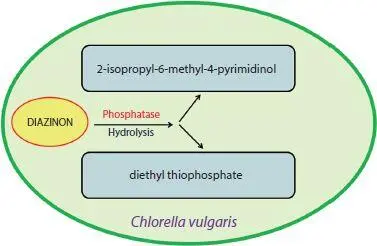
Figure 1.3 Schematic representation diazinon degradation by Chlorella vulgaris [38].
1.4 Strategies for Phycoremediation of Pesticides
1.4.1 Involvement of Enzymes in Phycoremediation of Pesticides
Biodegradation involves the breakdown of organic compounds into its inorganic constituents. Enzymes are one of the important biomolecules involved in the degradation of pesticides. The three main enzymes involved in pesticide degradation are hydrolases, esterases (also hydrolases), and the mixed function oxidases (MFOs). These enzyme systems are involved in the first metabolism stage of the pesticide and the glutathione S-transferase (GST) system, in the second phase [46]. In general pesticide, metabolism involves three main phases. During the Phase I of pesticide metabolism, the parent compound is converted into a more water-soluble and less toxic form by various processes such as oxidation, reduction, or hydrolysis. In the second phase, the water solubility and toxicity of the pesticide is further reduced by conjugation of the pesticide or pesticide metabolite to an amino acid or sugar. In the third phase, Phase II metabolites are converted into non-toxic secondary conjugates [46, 47]. Microalgae are photosynthetic organisms equipped with efficient enzyme system to metabolize and degrade various organic pollutants such as pesticides. Pertaining to their potential to degrade pesticides, microalgal species are recommended for remediation of the site contaminated with highly toxic pesticide like lindane [8]. Degradation of organophosphorus pesticide in presence of microbial enzymes has attracted the attention of scientist across the world. For instance, the enzyme alkaline phosphatase secreted by Spirulina platensis can hydrolyze chlorpyrifos, an organophosphorus pesticide, into 3,5,6-trichloro-2-pyridinol (TCP) [48]. Thus, immobilization of these pesticide degrading enzymes secreted form microalgae on solid matrix can be employed for remediation of pesticide contaminated sites [8].
Читать дальше


